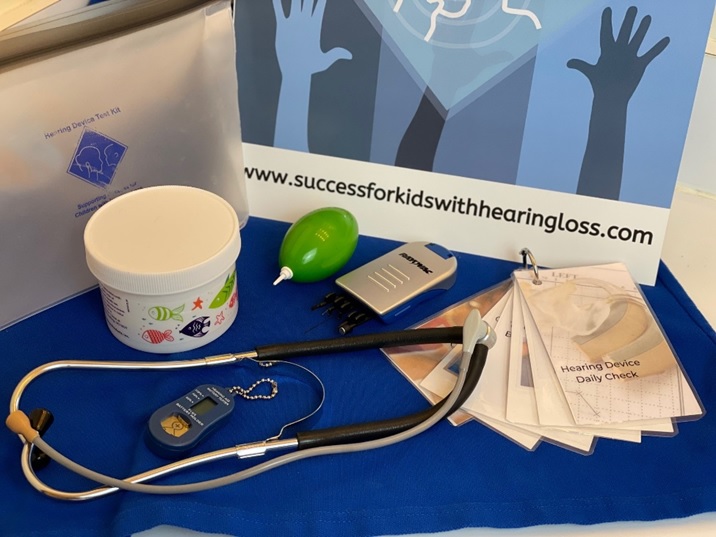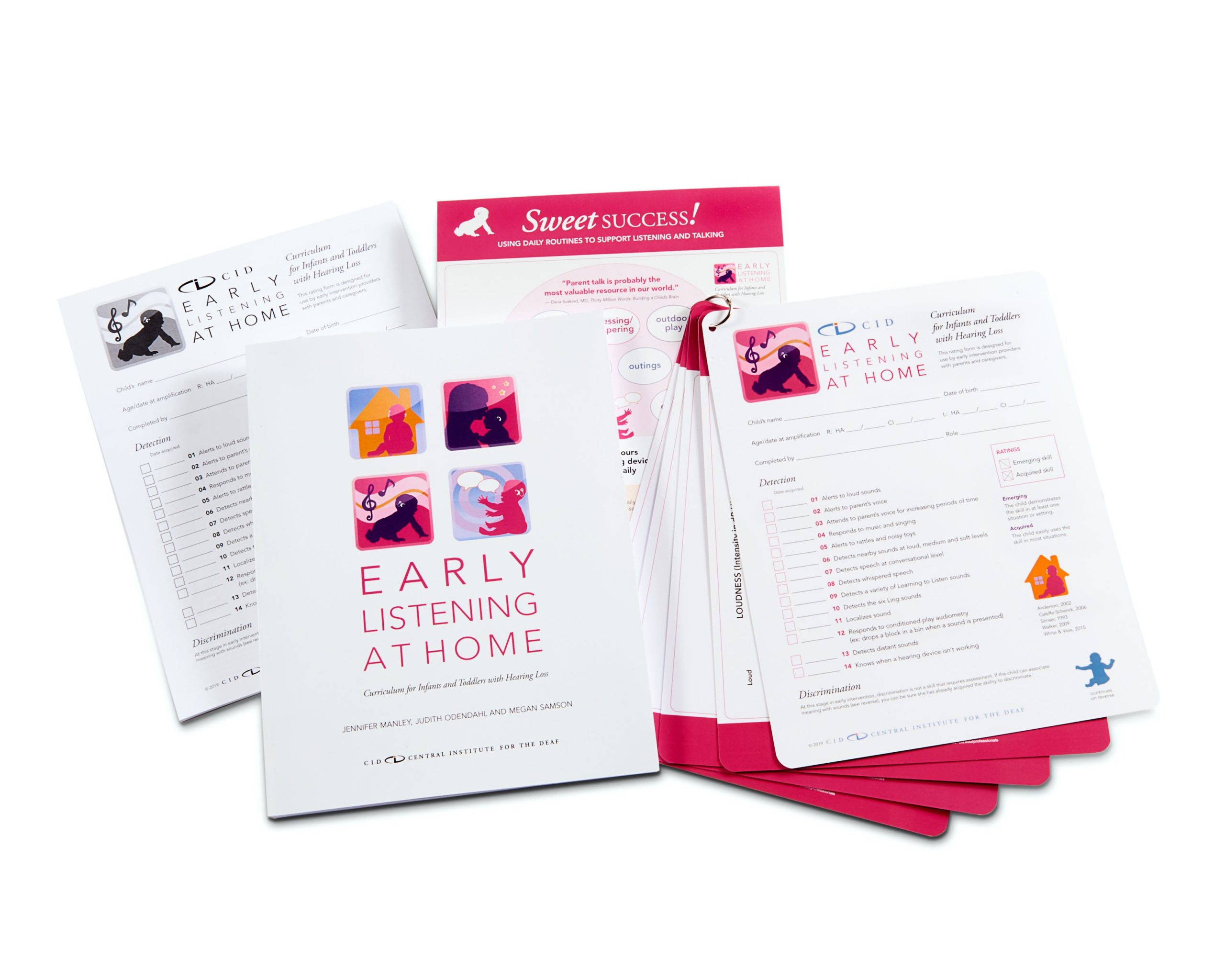Related Products
For Professionals
- Amplification
- Assessment of Student Skills, Challenges, Needs
- Early Childhood: Infants, Toddlers, Preschool
- Hearing Loss – Identification, Impact and Next Steps
- IDEA Law Summary Information
- Language and Speech Development Issues
- Legal Issues in Serving Children with Hearing Loss
- Listening (Auditory Skills) Development
- Planning to Meet Student Needs
- Self-Advocacy Skills for Students with Hearing Loss
- Self-Concept: How the Child with Hearing Loss Sees Himself
- Social Skills
- Speech Perception & Learning
Related Teacher Tools Takeout Items
Better Listening in Group Settings
 Despite advances in hearing device technology, listening in group settings can still prove very challenging for students with hearing loss. Therefore, it’s important that the students with hearing loss themselves, as well as their educators, understand how to optimize listening in group settings. Students can manipulate their environment, utilize assistive listening technology, and use optimal communication strategies to ease listening in these challenging situations.
Despite advances in hearing device technology, listening in group settings can still prove very challenging for students with hearing loss. Therefore, it’s important that the students with hearing loss themselves, as well as their educators, understand how to optimize listening in group settings. Students can manipulate their environment, utilize assistive listening technology, and use optimal communication strategies to ease listening in these challenging situations.
Environmental acoustics should be considered prior to the start of a group learning session. If possible, students with hearing loss should sit with their backs towards a wall or barrier. This allows the students to avoid unnecessary background noise from behind. Visual cues from the speaker can also be very helpful when listening in challenging environments. That being said, lighting should be altered to allow for consistent access to visual cues, and the student with hearing loss should be in a position where he or she has consistent visual access to anyone in the group who may be speaking. Windows should be avoided, when possible, to reduce the possibility of a glare that would hinder consistent visual cues. Lastly, an Educational Audiologist may be able to assess the environment to determine the extent to which carpets, draperies, or acoustic tiling may help to reduce reverberation and background noise in the learning space.
Utilizing a child’s hearing devices and introducing hearing assistive technologies can also prove beneficial during group listening. Most hearing aids and cochlear implants either automatically manipulate or allow users to manually manipulate microphone directionality. The goal of this would be to have the device microphones focus on picking up the primary signal of interest (e.g., talker) as opposed to background noise. Students can ask their hearing healthcare provider to review these options with them.
Furthermore, assistive listening devices can significantly enhance listening in adverse environments for individuals with hearing loss by sending the primary signal of interest directly to their hearing devices. For instance, if the group is watching a video, the audio signal may be sent directly from the video source to the student’s hearing devices so that effects of distance, noise, and reverberation do not prevent them from hearing it clearly. Many times, hearing aids and cochlear implants have compatible remote microphones that may be useful in group situations. Depending on the microphones’ capabilities, the student may have to ask each individual to hold or wear the microphone as he or she is presenting, or, they may be able to lay the device horizontally on a table in order to capture the voice of whomever is speaking.
| Assistive listening devices can significantly enhance listening in adverse environments for individuals with hearing loss by sending the primary signal of interest directly to their hearing devices. |
Lastly, optimal communication strategies should always be employed when participating in group activities. Examples of optimal communication strategies include: asking for one person to speak at a time, asking the speaker to face the individual with hearing loss when speaking, asking for clarification and repetition when needed, and asking for other group members to remain still and quiet when someone is speaking. In cases where a single microphone is being used to project a speaker’s voice in a group setting, it is helpful for the speaker to repeat individual questions or comments from group members who may be located further from the microphone. Individuals with hearing loss should also be mindful of reducing background noise as much as possible in their listening environment by sitting farther away from doors and other possible areas associated with noise (e.g., windows facing a busy street or playground).
In summary, group listening is still an area that can present many challenges for individuals with hearing loss. To optimize listening in these situations, the person with hearing loss can manipulate their physical environment, utilize different programming on their devices or introduce assistive listening devices, and implement optimal communication strategies. Success for children with hearing loss in group settings can be achieved with preparation and participation from not only the individuals with hearing loss themselves, but also from their peers and educators!
Author: Tessa Wirt, AuD. DePaul School for Hearing and Speech



